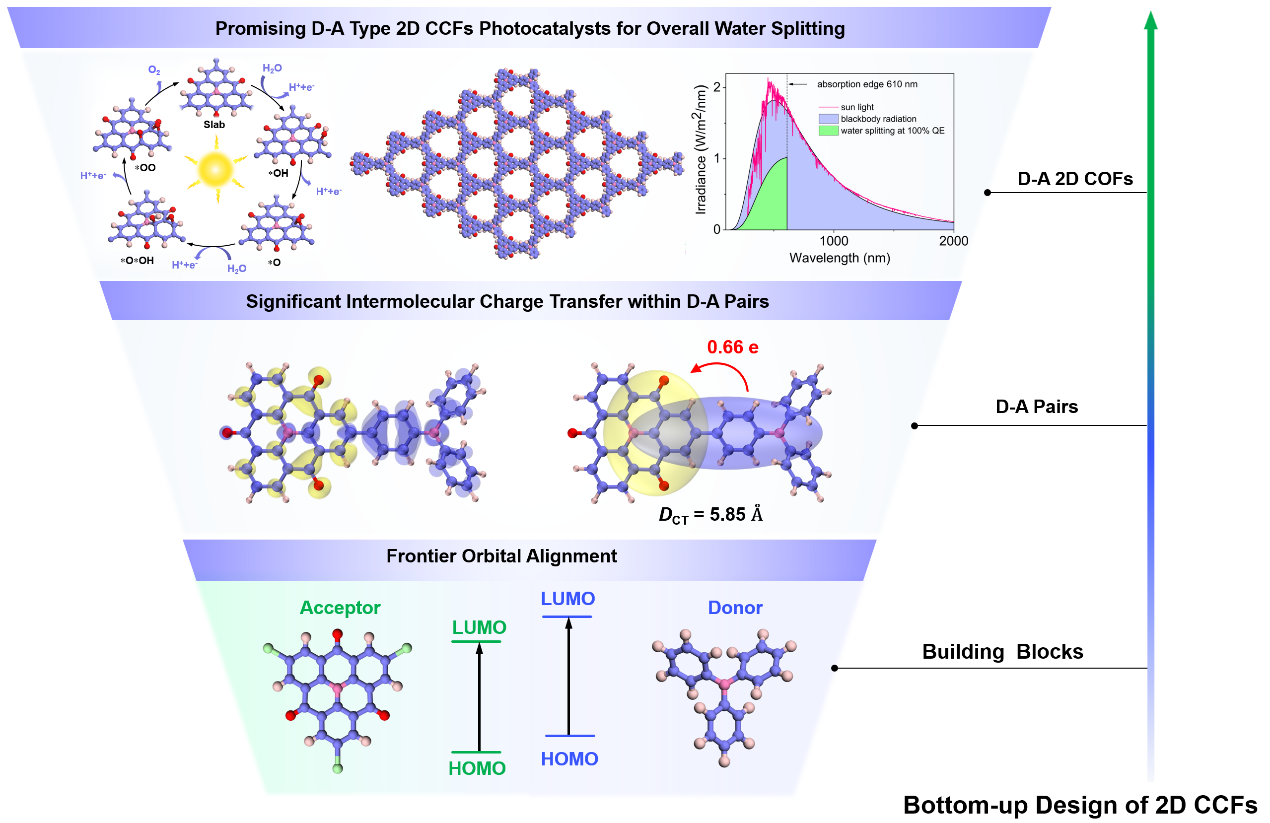Recently, the research team led by Professor Wang Hongyan from the School of Physics Science and Technology of Southwest Jiaotong University (SWJTU) has made significant progress in the design and performance research of two-dimensional covalent organic frameworks (2D COFs) as photocatalyst materials. The relevant research findings, with SWJTU's School of Physics Science and Technology as the first author institution, have been published in Advanced Functional Materials (IF=18.5), a top journal in the field of materials science. The title of the paper is "Design of Donor-Acceptor Type 2D Covalent Organic Frameworks as Efficient Photocatalysts for Visible-Light-Driven Water Splitting". The first author of the paper is Chen Jiao, a doctoral candidate under the supervision of Professor Wang Hongyan. The corresponding authors are Professor Wang Hongyan and Associate Professor Chen Yuanzheng from the School of Physics Science and Technology of SWJTU, as well as Professor Bai Fuquan from the College of Chemistry, Jilin University.

2D COFs exhibit important application prospects in the field of photocatalytic overall water splitting (OWS) for hydrogen production due to their abundant accessible catalytic sites and excellent mass transfer performance resulting from their porous structure. These materials can precisely regulate the light absorption range, carrier mobility, and distribution of catalytic active sites through molecular engineering, significantly enhancing solar light utilization efficiency and catalytic activity. As emerging organic semiconductor photocatalysts, 2D COFs provide new ideas for the development of efficient and stable overall water splitting systems, which is of great significance for promoting the development of green hydrogen energy.

In this research work, the team led by Professor Wang Hongyan introduced donor-acceptor (D-A) units into the two-dimensional periodic skeleton of the photosensitive unit carbonyl-bridged triphenylamine (CTPA) through a bottom-up molecular design strategy. Based on the Ullmann C-C coupling reaction, the research team successfully constructed a series of D-A-type two-dimensional covalent CTPA-based covalent organic frameworks (CCFs) materials. First-principles calculations indicate that the introduction of the D-A structure significantly enhances the intermolecular charge transfer effect of the materials, enabling efficient separation and transport of photogenerated carriers.
These two-dimensional CCFs materials exhibit high stability at room temperature and 500K, while also demonstrating an adjustable band gap of 2.31-3.15 eV. Their band structure meets the thermodynamic requirements for photocatalytic OWS, and they have a high light absorption coefficient in the visible light region (~1 × 105 /cm). In addition, these materials have spatially separated HER and OER active sites on their surfaces, enabling spontaneous overall water splitting driven by visible light. Among them, the catalytic performance of the CTPA-TPA COF material is particularly prominent, with a theoretically calculated solar-to-hydrogen (STH) conversion efficiency of up to 18.6%. This research provides a new molecular engineering strategy for designing efficient COFs-based photocatalysts for overall water splitting.
Link: https://doi.org/10.1002/adfm.202505453





